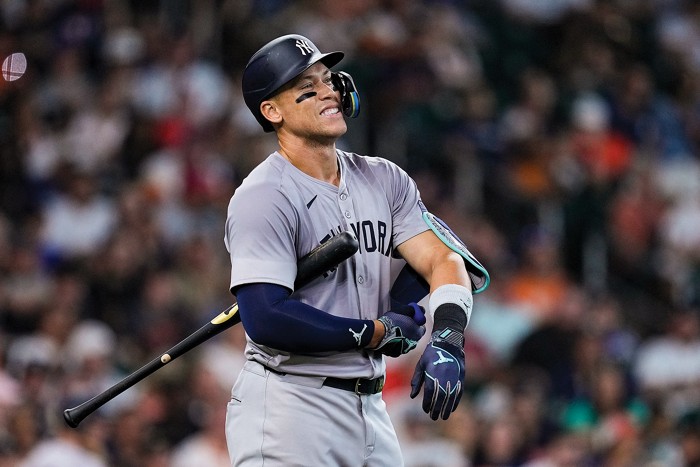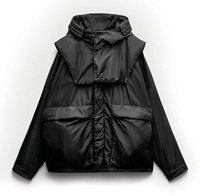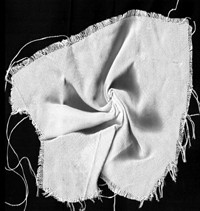Advertisement
Grab your lab coat. Let's get started
Welcome!
Welcome!
Create an account below to get 6 C&EN articles per month, receive newsletters and more - all free.
It seems this is your first time logging in online. Please enter the following information to continue.
As an ACS member you automatically get access to this site. All we need is few more details to create your reading experience.
Not you? Sign in with a different account.
Not you? Sign in with a different account.
ERROR 1
ERROR 1
ERROR 2
ERROR 2
ERROR 2
ERROR 2
ERROR 2
Password and Confirm password must match.
If you have an ACS member number, please enter it here so we can link this account to your membership. (optional)
ERROR 2
ACS values your privacy. By submitting your information, you are gaining access to C&EN and subscribing to our weekly newsletter. We use the information you provide to make your reading experience better, and we will never sell your data to third party members.
Materials
Scientists take a swing at baseball uniforms’ sweat stain issue
Performance sports fabrics are complicated, with complex manufacturing chains
by Prachi Patel
April 12, 2024

Soon after the 2024 Major League Baseball (MLB) season started in March, sweat stains began to bloom along with spring flowers. In particular, sweat seemed to be soaking through the gray uniform jersey that team members wear when they play away from home, turning them visibly dark.
It shouldn’t surprise anyone, especially sports apparel companies, that athletes sweat. And synthetic sport performance fabrics, whether they’re intended for soccer, track, tennis, or lower-impact activities, are designed to provide temperature control and antibacterial properties to help keep their wearers comfortable and fresh.
In fact, 6 years’ worth of engineering went into the Nike Vapor Premier baseball uniforms, designed by Nike and manufactured by Easton, Pennsylvania–based Fanatics, according to the MLB. So what went wrong?
C&EN asked textile researchers to speculate, and they had fun doing it. “Textile structures are incredibly complex, and when you add chemical finishes, the degree of complexity multiplies,” says Juan Hinestroza, professor of fiber science and apparel design at Cornell University. So the answer to what possibly went wrong is “all of the above,” he says.
The new MLB uniforms are designed to be more sustainable than previous ones while improving moisture management and mobility. MLB and Nike claim that the uniforms are made from at least 90% recycled polyester yarns, have Nike’s proprietary moisture-wicking Dri-Fit technology, and are designed to provide 25% more stretch.
Performance fabrics wick moisture using two methods, Hinestroza says. The physical method combines fibers of different diameters and shapes to create channels that move sweat away from the body via the capillary effect. The chemical route consists of coatings that combine hydrophilic and hydrophobic materials to draw sweat away from the skin. Hinestroza says that, from what he sees in the pictures, the MLB uniforms appear to be reverse wicking—“capturing humidity and sending it back to the body.”
That could be because of the recycled content, he says. Recycled fabrics can contain weakened raw materials from many sources and are often coated or blended with other materials to restore their original strength. Nike is also adding a stretchy polyurethane fiber—known as spandex or elastane—to the yarn. All this gives a chemically and physically heterogeneous material that can behave in unanticipated ways after coatings are added.
He says it’s also possible that there’s a mistake in the formulation of a chemical fabric finish or that sweat is interacting with finishes or the textile structure in an unexpected way.
According to Tasha Lewis, a professor of fashion and retail studies at the Ohio State University, the problem could be that the material is wicking moisture to the surface but that the moisture is not evaporating. “Maybe something’s been done to the fibers or the yarn that prevents” evaporation, she says. But Lewis doesn’t think the recycled content should be an issue, as companies have figured out how to recycle polyester well.
Whatever the underlying chemical or material gaffe, the problem most likely stems from the uniforms’ complex manufacturing chain. Every MLB jersey and pair of pants is the product of multiple fiber and yarn producers, textile mills, and chemical suppliers spread across the world. To Henry Boyter, an expert on textiles and finishes and director of the Center for Environmentally Sustainable Textile and Apparel Businesses, it’s probably a quality control issue. “There is a large amount of testing that should have been done to ensure quality and that was probably not done,” he says. “We only know for sure that human wear trials were not completed, or ignored.”
Hinestroza says researchers in his lab could help solve the problem if they could get their hands on some samples of MLB uniforms. “This is a fascinating learning opportunity for people who study surface chemistry, textile chemistry, and fiber science,” he says.
Getting samples for testing could be wishful thinking. Nike did not respond to a request for comment. But the company said in a statement issued to The Athletic that it has “isolated the issue and [is] exploring a solution to minimize it.”
Lewis wishes Nike well. “I hope they solve this conundrum so people can focus on the game.”
CORRECTION:
This article was updated on April 22, 2024, to correct Tasha Lewis’s title. She is a professor of fashion and retail studies, not a professor of fiber science and apparel design.





Join the conversation
Contact the reporter
Submit a Letter to the Editor for publication
Engage with us on Twitter